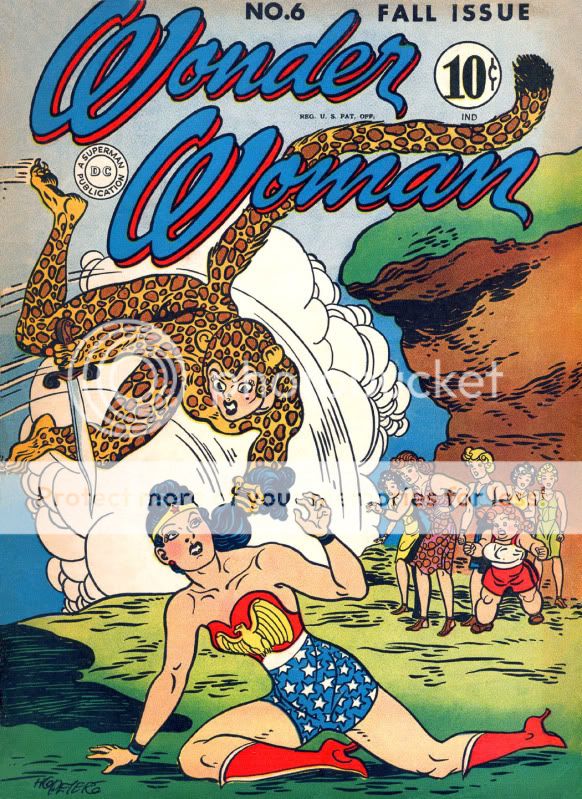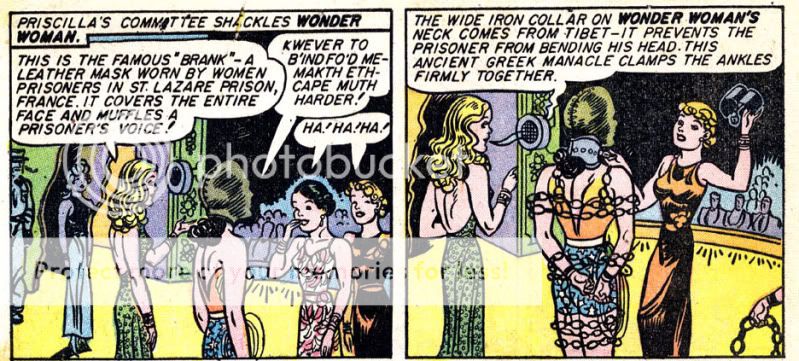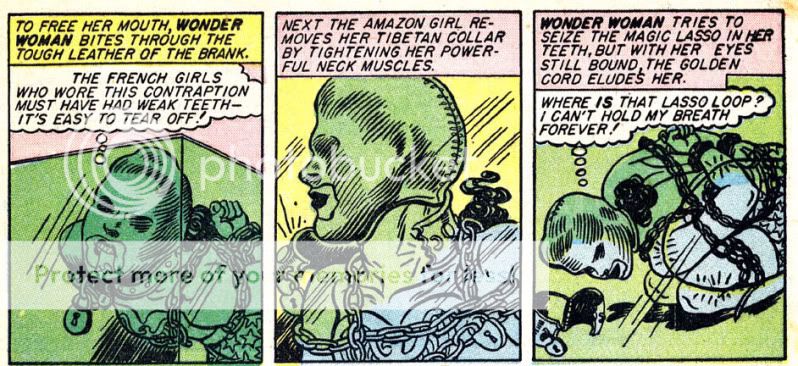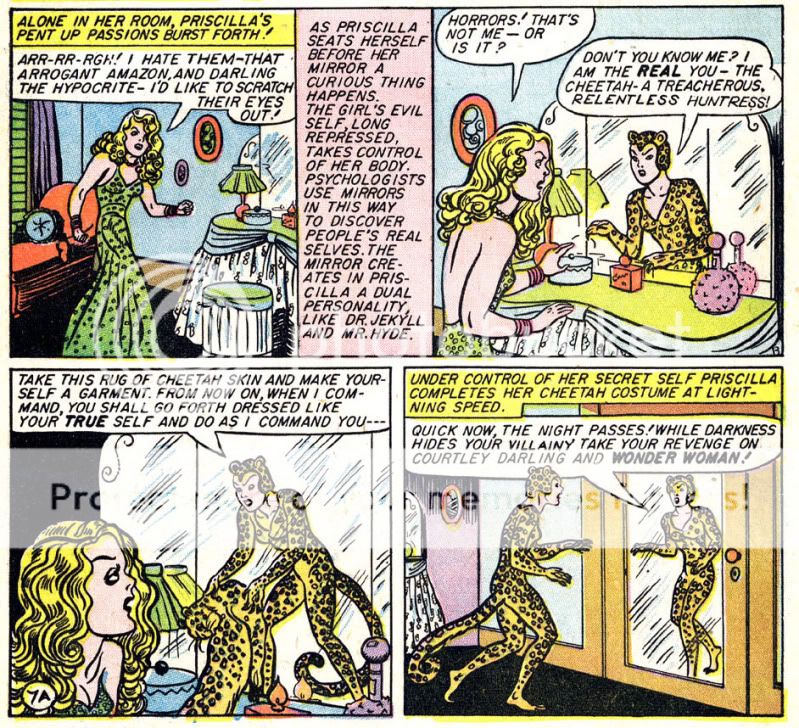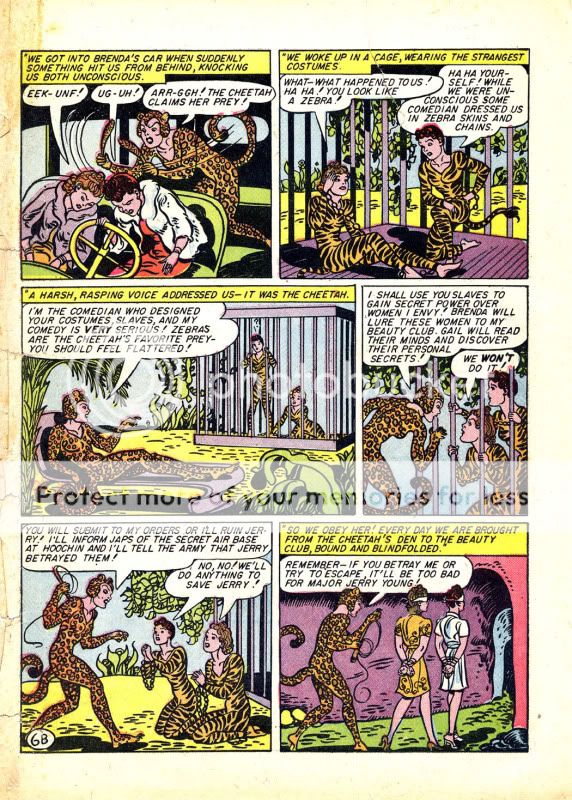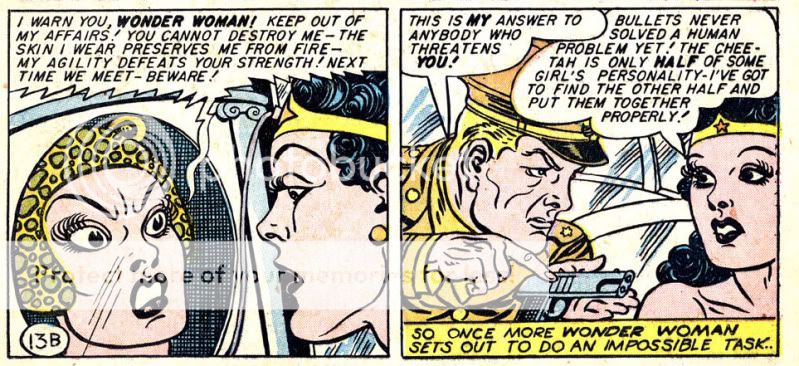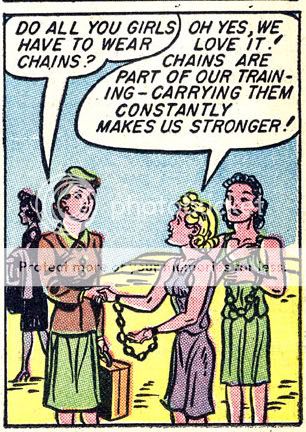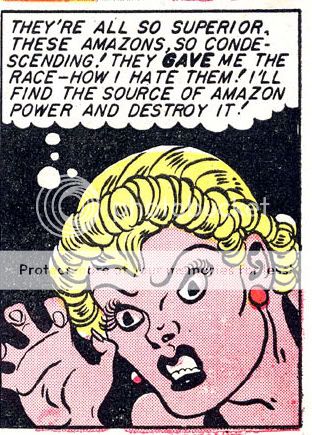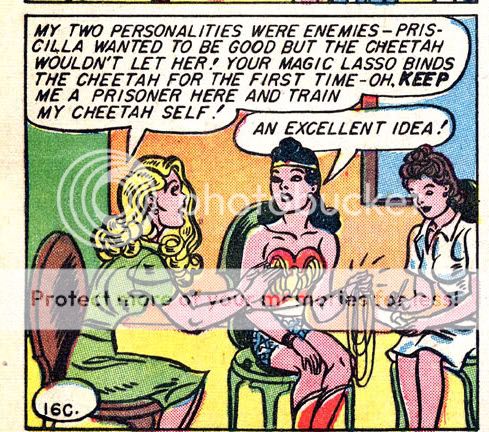For those who care about such things, this is both part of my ongoing series on the Marston/Peter Wonder Woman run and part of our ongoing roundtable on Mary Sue characters.
I wrote this over the weekend, incidentally, before I’d convinced myself that Mary Sues had some positive aspects. I could have rewritten, I guess, but…eh, why bother? Consistency is the hobgoblin of my little mind.
___________.
In this post I argued that the comic Legion of One, and much of contemporary Wonder Woman — and indeed, much of contemporary super-hero comics in general — are essentially Mary Sue stories. Mary Sues is usually used to refer to a non-canon, author-surrogate character of exceptional and irritating wonderfulness introduced into a fan-fiction story. I argued that, in contemporary comics, the canon itself is riddled with Mary Sueism, such that you get stories whose main point seems to be the reiteration of how great Wonder Woman is, or how mythical Superman is, or how everyone wants to be in the Justice League. Whole comics seem devoted to puffing the putative protagonists, as if the reader won’t believe that Captain Marvelous is really Marvelous unless he or she is reminded of that fact every fifth panel.
One could argue, I guess, that this is in general true of all super-heroes; after all, the whole point of Superman is for him to be super, the whole point of Wonder Woman is for her to be wonderful. That’s true to a certain extent, sure — but I think that in general, golden age and silver age comics tended to be less self-conscious about this sort of thing. I think this is especially true of the Marston run; certainly, Wonder Woman was always wonderful, and Marston liked that about her…but his plots tended to be as much or more about his own weird fetishes and his goofy imagination as about reiterating her greatness. If the plot called for it, he’d cheerfully have Wonder Woman be saved by Etta Candy, and damn WW’s supposed superiority. If his fetishes called for it, he’d happily have WW fail in her duty to be authoritative and be chastised for it by Aphrodite.
You can see the sort of thing I’m talking about in the first few pages of Wonder Woman #6. In the ostensible plot, WW is putting on a show to raise money for “restored countries” (presumably nations retaken from the Axis by the Allies.) She’s there to demonstrate just how great she is, to do spectacular feats, to wow the crowd. And yet, Marston just can’t keep his focus; his mind drifts…and suddenly, before you know it, we’re talking, not about WW’s greatness, but about the wonders of multi-ethnic restraint technology. Priscilla Rich, the socialite who organized the benefit, has a hobby, you see…she collects manacles from around the world! Or, as WW puts it “Priscilla’s hobby is collecting chains…mine is breaking them!”
This scene climaxes (as it were) with the sequence that first got me intrigued with the Marston/Peter run in the first place: WW in a gimp mask underwater, sneering at the weak jaws of French girls as she braeks free of the gimp mask with her teeth (Marston loves, loves, loves to have WW tied up in such a way that she can only escape by using her teeth. I leave you to draw your own conclusions.)
Basically, Marston’s fantasy uber-self is a trussed-up woman with phenomenal jaw strength. You can call that a Mary Sue in a sense…but it’s a Mary Sue so preposterously idiosyncratic that it really seems like she needs another name. Masoch Sue, perhaps.
So that’s that for that argument…or rather, I wish that were that. Because the fact is that, while Marston’s obsessive eccentricity usually does allow him to avoid most of the Mary Sue pitfalls, things don’t always work out quite so neatly. Specifically, in this issue, Marston does actually, and with some consistency, treat Wonder Woman and the Amazon race in general as something of a typical Mary Sue. As a result, this issue is (by Marston-Peter standards) relatively boring. It also, and I think not coincidentally, highlights some of the less pleasant implications of Marston’s gender politics.
As you can see from the cover at the top of the post, this issue involves WW in a fight against the Cheetah. The Cheetah, as it turns out, is actually Priscilla Darling (the socialite who likes to collect chains.) Said chain-collecting socialite is jealous of WW, and also owns a mirror — the combination, apparently, drives her insane, and she becomes…evil!
The rest of the issue is given over to the Cheetah’s sneaky plans to destroy WW. These are for the most part typical Marston fare; fairly entertaining, though not as crazed as he sometimes gets. The moment where she dresses up some captives as zebras is probably the highlight.
Overall, though, the Cheetah is a problematic villain in a couple of ways. First of all, she’s actuated entirely by jealousy; she’s a super-villain just because WW makes her feel inferior. From Marston’s perspective, this is supposed to be a cautionary tale about women’s self-esteem, I think — that is, women should feel good about themselves.
Which is okay I guess, but…the thing is the Cheetah really is inferior to Wonder Woman. In past issues, WW’s enemies have been gods like Ares, or evil geniuses like Dr. Psycho or the Baronness, or entire subterranean races. They were real threats. But the Cheetah’s just this socialite with multiple personality disorder. Yes, she uses lots of cowardly tricks, and she’s supposed to have agility because she’s dressed like a cheetah I guess, but…come on. She’s screwed; she’s the underdog. And if she’s the underdog…well, you feel bad for her, or at least I did. You sort of want her to win.
In other words, you have a classic Mary Sue set-up — WW is too good to root for. She’s got an unfair advantage; you feel like the author has his hands on the scale. It’s especially painful because WW seems to know, just by osmosis, that the Cheetah’s real problem isn’t that she’s evil, but that she’s just misunderstood.
I mean, in that two-panel sequence, the Cheetah is clearly a more appealing personality. She’s all crazed bluster and braggadocio, while Wonder Woman comes across as some kind of sanctimonious super social worker.
Things only get worse in the book’s final chapter, though. For obscure reasons, WW decides to stage a contest between her friend Paula’s slave girls who are being trained by Amazons on Paradise Island and the greatest women athletes of earth. The Amazon-trained women are, of course, stronger, faster, and more awesome, primarily because they wear chains.
So, inevitably, the sportswomen of earth get their butts kicked by the chain-wearing submissives.Paula, the slave-girls’ leader, even insists that her girls compete in the running events while wearing ankle chains.
The woman on the right in the picture above is the Cheetah in disguise. And, I have to say, she’s got a point. Running a race with ankle-chains on does seem like an effort to deliberately humiliate your competition; it’s a shitty thing to do. Moreover, while it’s not a trick of Wonder Woman’s diagetically, it does seem like a trick of Marston’s — the Amazons all seem like Mary Sues, boosted into wonderfulness by authorial favoritism.
What’s especially icky about all this, of course, is that the favoritism is explicitly linked to the women’s submissiveness. This isn’t exactly new, of course; Marston is always riffing on the virtues of submission as power, or power as submission. Often, Marston presents that submission/power as an alternative to low self-esteem and weakness — “you girls really can do anything! Don’t let me hear you say you can’t crush the seal-men! I know you can if you just learn to love giving and receiving bondage!” It’s ridiculous, but at least the overall arch is about depowered women gaining strength and control over their fate, at least in some sense. Here, though, the women who Marston is supposedly educating about the virtues of self-confidence are already world-class athletes. And as a result, you really start to wonder…do these women actually need a skanky perv, no matter how well-intentioned, lecturing them on the virtues of self-esteem? I mean, let’s say you’ve got an Olympic level runner there, someone who has been training for years; someone who has bucked the general prejudice against women’s athletics, which certainly existed back in the 1930s. How exactly is it liberating to pretend that she’d be better off as a runner and as a human being if she learned to love being chained?
Marston’s fetish and his feminsm often work together, as I argued in this essay. In this narrative, though, they don’t…and forced to choose, he unhesitatingly goes with the fetish. The bondage girls of his wet dreams beat the real-world athletes, and even humiliate them. And just to clinch things, he gives the only word of protest to the piece’s villain:
That’s the Cheetah in disguise again…and, again, she’s absolutely right (and I’m not just saying that because I love those Peter-drawn eyebrows.) The Amazons, or rather Marston through the Amazons, are being condescending assholes. You do sort of want to see them (or rather him) get a comeuppance. Let’s have the damn Mary Sues trip over their stupid chains, already.
Cheetah makes a go of it, but, of course, it doesn’t work out. She does get to tie up Hippolyta, but really, who doesn’t? Ultimately, WW wins. And as if that’s enough, with the help of the magic lasso, she makes the delinquent confess and beg, not for forgiveness, but for discipline — “keep me a prisoner here and train my cheetah self!”
In our Helter Skelter discussion I expressed some doubts about bad-girl, Courtney Love style feminism; the whole idea that being a jerk is an effective way to fight the power. This story, though, made me recosider. I still don’t think that being a jerk is necessarily a particularly useful strategy…but if the choice is between more or less futilely acting like an evil jerk and meekly acquiescing in your own disempowerment — well, one can see why the first option has some charm. Marston connived to make the Cheetah feel inferior, and so she got pissed right the fuck off. The getting pissed off is supposed to make her evil…but in fact, getting pissed off seems like a reasonable, and even, dare I say, a feminist response. Marston decides to discipline her because she’s not sufficiently restrained, and then he sanctimoniously suggests that restraint will make her stronger. In fact, though, power doesn’t necessarily always come from restraint — or, at least, it depends on who is doing the restraining. The Cheetah represents, it seems to me, an angry feminine — a feminine not bound by Marston’s particular obsessions, and not especially interested in his games. He doesn’t handle it well.

